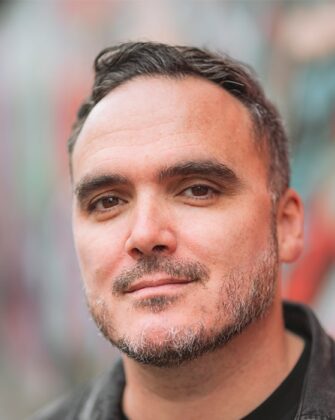What good is a creative brief that gets written and then filed away? I’d like to share with you what I have learned about how to write a creative brief that people will actually read and use and refer to.
Most creative projects tend to go wrong for teams not because they designed things wrong, but because they designed the wrong thing – although it might seem basic at first, this little fact can have massive implications.
Talking about the goals of the project is crucial, but often we only have these discussions during a kickoff meeting – then we jump into the details of executing and never look back.
However, things are never that easy. Objectives change. New people come on board. Requirements change, and we hit blockers and challenges that force us to rethink what we’re trying to create, and why.
The only problem with creative briefs is that nobody wants to read them
One tried and tested (and tragically flawed) way to solve the age-old problem of “designing the wrong thing” is the ill-fated design brief.
This is usually a long-winded document – so long in fact that nobody actually reads it more than once, if at all – that was probably enthusiastically written before the project began, by someone who isn’t doing the work. It probably has gaps. You probably have questions. It’s 12 pages long. And you can’t remember when it’s saved. Sound familiar?
Here’s how we solve this problem at Hallam: the Magic Brief.
Enter the Magic Brief
Before starting work on a project (it could be a meeting or some design work), one of the team members on the project reads the exact same document out loud – word for word.
The document (which should be no longer than a side sheet of A4) contains a short but clear creative brief about the project the team is working on, answering four simple questions:
- What is the objective?
- Who is the key audience or persona?
- What is the scenario or situation we’re solving?
- What is the key principle we should follow?
Reading it out loud is essential – it’s how we start each meeting, whether it’s a brainstorming session or a design review.
This little ritual takes a few minutes to complete, but it completely changes the tone and focus of each meeting.
Everyone’s on the same page – literally.
Like most teams, we’re juggling dozens of projects at the same time, each with its own brief and outcomes. By reading the Magic Brief at the start of every meeting, the makes it clear to everyone in the room what we’re about to discus..
A simple way to ensure continuous improvement
The project leader turns to the room and asks the question:
“Does everyone agree that this is what we’re working on?”
Most of the time, everyone nods in agreement – but occasionally, someone ask for clarification, and a quick discussion clarifying some important detail usually leads to an improvement in understanding, or a previously unknown risk or blocker being highlighted, saving precious time later in the project.
A simple ritual with a big payoff
This simple routine allows the brief to constantly improve and refine, long after it’s first written and shared with the team – it could even save dozens of hours of wasted work, as requirements and understanding change along the way.
Repeating the creative brief at the start of the every project meeting also has an interesting effect: it helps the team separate what we’re aiming for with a design from how are we going to do it. This helps keep the team focused on the big picture at all times, not just lost in the detail of production: does this design take us where we’re trying to go?
How does it work?
The key is to keep it short and simple – our rule is no longer than a single side of A4. Nobody reads long “traditional” briefs, and they usually contain so much useless information that they tend to hide what’s actually important.
the goal to dismantle the problem to solve into 4 simple components:
Section 1: Objectives
A few short sentences about what this project (or part of a project) is trying to accomplish. What problem are we trying to solve?
The key thing is to keep the objective simple and high-level, so it doesn’t get bogged down by technical detail or constraints.
Example: build an automated system to allow users to buy coffee online. Website visitors can read about and choose a roast of their choice, and have the option buy a subscription or a one-off product, and pay online for home delivery.
Section 2: The key audience or persona
List one or two key personas that you are designing this functionality for – this’ll help eliminate discussions about personas or scenarios that aren’t the most relevant at the time. You can use pre-existing personas for this, or simplified versions of them.
Include details or factors that’ll play a key role in the decisions to be made in this scenario. Although these personas will usually be familiar to the team, they’ll play a key role in discussions because they’ve just been read aloud. This’ll help keep the team focused on the task at hand.
Example: Joe loves coffee, and he knows what he likes. Although he’s not what you’d normally call a connoisseur, he’s quite picky when it comes to good coffee and he’s always happy to try new things.
Section 3: Scenario
Describe a short story of the problem the design is trying to solve. Although there will often be many scenarios, choose one that’ll keep the design focused on the primary problem to solve, keeping the team focused on what matters the most.
The scenario should include enough detail to bring the design to life – but always keeping the objectives in mind.
Example: Joe is a big fan of the brand and our coffee shops, so he’s recently decided to start making coffee at home. He recently bought a new machine, and needs help choosing the right type of beans and how to grind them properly. He’s willing to try a few different things before deciding on the best product.
Section 4: The key principles
Choose a few guiding principles that should lead the thinking around the work to be done – this helps keep things aligned around a creative vision or brand principle, without having to diver too deep into the brand itself.
Example: user delight above all – the design should aim to make the shopping experience smooth and memorable. Make the most of the available imagery, but keep in ind the speed of the experience, avoiding unnecessary steps during checkout.
A simple ritual that everyone can use to get work done
We’ve been using this simple but effective way of briefing in work on our design projects at Hallam for some time now, and we’ve found Magic Briefs making their way into other types of work – they can be used for almost anything, with only a few small changes to the format.
There are no hard rules on how to use them – just remember to keep them simple, if you actually want people to tread them.
A short, concise brief about what we’re trying to do helps to keep meetings focused, and work productive. The end result is better design, and better awareness of the problem to solve through continuous improvement.
The Magic Brief was inspired by Jared Spool’s 2012 post “The Magical Short-Form Creative Brief”, which we’ve adapted and changed over time to power our design work.


